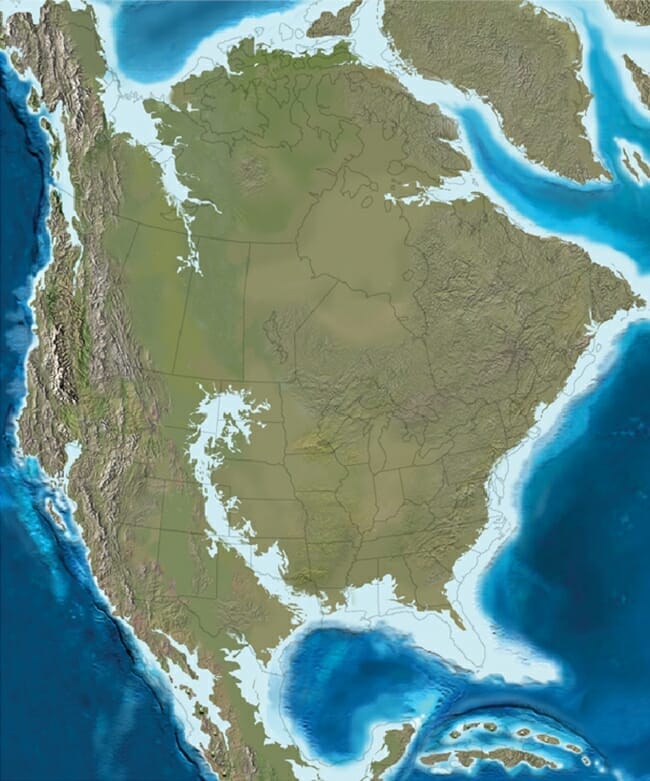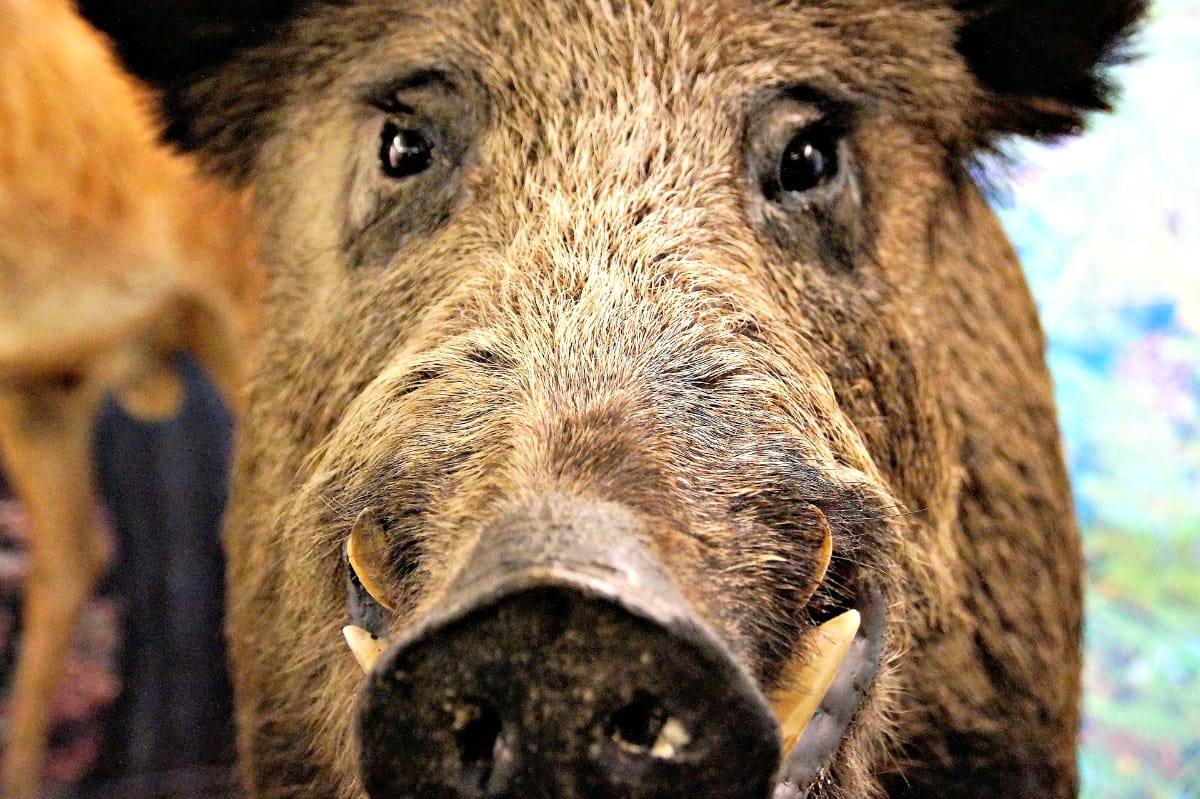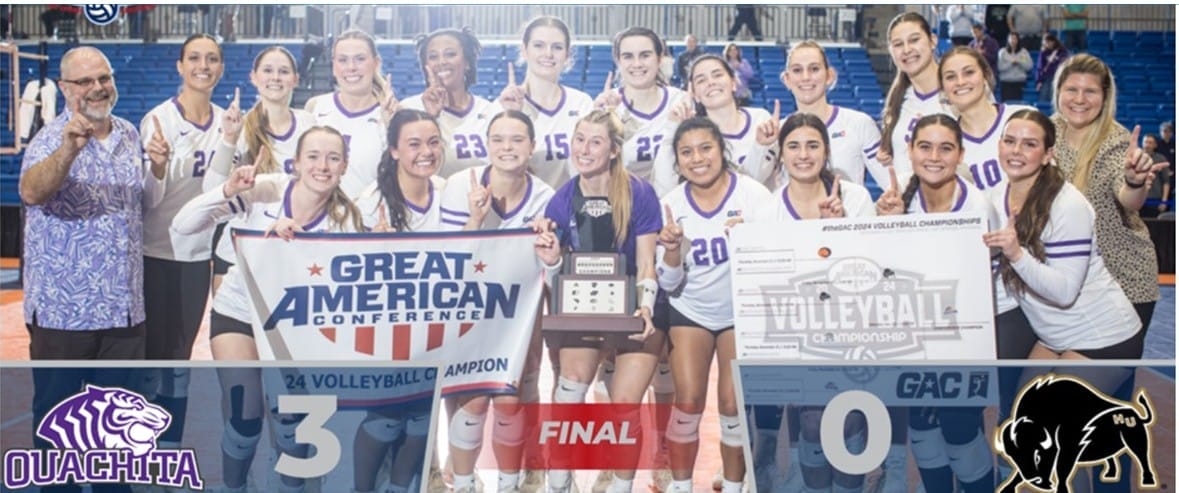

Uh oh...
It appears that you're using a severely outdated version of Safari on Windows. Many features won't work correctly, and functionality can't be guaranteed. Please try viewing this website in Edge, Mozilla, Chrome, or another modern browser. Sorry for any inconvenience this may have caused!
Read More about this safari issue.

The history of Arkansas stretches back to over 500 million years ago when the state was covered in water from a prehistoric ocean. Between 250 and 300 million years ago, the Ozark and Ouachita Mountains formed, which lifted parts of the state out of the water and allowed the preservation of some fossils. During this time, life in Arkansas was mostly aquatic in the form of trilobites—small, hard-shelled creatures that dominated marine life at the time. Trilobites eventually gave way to brachiopods and mollusks, whose fossils can be found even today in the limestone bluffs in northern Arkansas.

Trilobite By Didier Descouens via Wikimedia
Much of the diversity of life in prehistoric Arkansas is still unknown. Since the state was covered in water, few fossils could be left behind. The Cretaceous era is often called the time of the dinosaurs. This time period began 144 million years ago and lasted until 65 million years ago. It featured some of the most famous dinosaurs, like Tyrannosaurus rex, velociraptors, triceratops and the great brachiosaurus. Though these dinosaurs roamed through the United States, it is hard to trace their presence in Arkansas. However, parts of Arkansas were not completely underwater during the late Cretaceous period. The rocky areas south of the Ouachita Mountains have yielded a few examples of life during that time.

Photo: By Ron Blakely, Colorado Plateau Geosystems via Wikimedia
The only dinosaur bones to be discovered in Arkansas were found in 1972. Joe B. Friday found the bones on his land in Sevier County. The bones are from the right hind foot of a dinosaur in rocks that date from the Cretaceous era. The bones tell us that dinosaurs certainly lived in Arkansas during the time, even if not much evidence survived. Professor James Harrison Quinn from the University of Arkansas cleaned and examined the bones. He found similarities between the bones and the species Ornithomimus, which was an ostrich-like dinosaur. Quinn named the bones “Arkansaurus fridayi” in 1973.

In 2003, ReBecca Hunt, a University of Arkansas alumna and a paleontologist for the U.S. Bureau of Land Management, studied “Arkansaurus fridayi” and declared it to be an unknown species. Arkansaurus is the second oldest ornithomimosaur in the United States and resembles an ostrich with a long neck and feathers instead of scales. Though not large in terms of dinosaurs, it was taller than humans and walked on 2 feet, with the ability to run fast. Hunt named Quinn as a second author on her paper in “Journal of Vertebrate Anthropology”, even though Quinn died in 1977 from a fall while collecting fossils. Hunt had studied the Arkansaurus bones since she was an undergraduate at the University of Arkansas in 2001.
In 2013, an Arkansas student named Mason Oury began a campaign to name Arkansaurus the official dinosaur of Arkansas. The Arkansas General Assembly named the dinosaur as the Arkansas state dinosaur in 2017. The Arkansaurus fridayi bones are kept at the University Museum Collections at the University of Arkansas.
Though Arkansaurus is the only dinosaur to be discovered in Arkansas, and to date, the only bones found in the state, there is other evidence of the presence of dinosaurs in the state. In 1983, dinosaur footprints were discovered at a gypsum mine near Nashville, Arkansas. Jeffery G. Pittman was at the mining site doing research for his master’s degree at Southern Methodist University. He drove his truck across the potholed, limestone floor of the quarry every day. After seeing preserved dinosaur footprints in Colorado and New Mexico, Pittman returned to Nashville to study these “potholes”. He realized they were actually part of a vast dinosaur trackway that included thousands of footprints. The prints belonged to sauropods, enormous dinosaurs with long necks and tales and thick legs. The tracks were made as many as 100 million years ago, and the sheer amount of tracks points to this area being a migration path.

The tracks were already deteriorating when the discovery was made and the quarry was scheduled to be mined in January 1984. A quick, six-week excavation took place. Scientists made silicone rubber molds of the tracks, took photographs, made sketches and also preserved some of the original tracks. The Nashville Sauropod trackway was then destroyed in the mining operations. Preservation would have been difficult, but the information that researchers gathered allowed them to continue to study the tracks. The molds of the footprints can still be found at Arkansas museums, including the Mid-America Science Museum and the Museum of Discovery in Little Rock, as well as the University of Arkansas.
In 2011, tracks were again discovered outside Nashville in the gypsum quarry. These tracks belonged to Acrocanthasaurus, a large carnivorous dinosaur that also dates back to the early Cretaceous period. Sauropod tracks were also discovered. A team of researchers used LiDAR technology, which stands for light detection and ranging, to scan the area with pulsed lasers. They used this to digitally recreate the area. This discovery confirmed the presence of theropods in Arkansas.

Though Arkansaurus is the only dinosaur discovered in the state, it is hopefully not the last. If you want to see dinosaurs in the state, visit the Mid-America Science Museum, which has a permanent dinosaur exhibit, or The Museum of Discovery in Little Rock.
We do the work.
You check your email.
Sign up for our weekly e-news.
Get stories sent straight to your inbox!












 Leave a Reply
Leave a Reply
There was an elephant bones believe to be woolly mammoth in Greene county and are on display in Jonesboro ASU or use to be
We’ve since discovered more dinosaurs in Arkansas. I’m not sure why it didn’t hit any major news outlets. They’ve been published on fairly recently in October:
https://peerj.com/articles/12242/
Abstract:
We present a previously discovered but undescribed late Early Cretaceous vertebrate fauna from the Holly Creek Formation of the Trinity Group in Arkansas. The site from the ancient Gulf Coast is dominated by semi-aquatic forms and preserves a diverse aquatic, semi-aquatic, and terrestrial fauna. Fishes include fresh- to brackish-water chondrichthyans and a variety of actinopterygians, including semionotids, an amiid, and a new pycnodontiform, Anomoeodus caddoi sp. nov. Semi-aquatic taxa include lissamphibians, the solemydid turtle Naomichelys, a trionychid turtle, and coelognathosuchian crocodyliforms. Among terrestrial forms are several members of Dinosauria and one or more squamates, one of which, Sciroseps pawhuskai gen. et sp. nov., is described herein. Among Dinosauria, both large and small theropods (Acrocanthosaurus, Deinonychus, and Richardoestesia) and titanosauriform sauropods are represented; herein we also report the first occurrence of a nodosaurid ankylosaur from the Trinity Group. The fauna of the Holly Creek Formation is similar to other, widely scattered late Early Cretaceous assemblages across North America and suggests the presence of a low-diversity, broadly distributed continental ecosystem of the Early Cretaceous following the Late Jurassic faunal turnover. This low-diversity ecosystem contrasts sharply with the highly diverse ecosystem which emerged by the Cenomanian. The contrast underpins the importance of vicariance as an evolutionary driver brought on by Sevier tectonics and climatic changes, such as rising sea level and formation of the Western Interior Seaway, impacting the early Late Cretaceous ecosystem.
Mastodon teeth, bison bones and a full jawbone for a juvenile woolly mammoth were dug up in Ark. in October 1982 by my father Kenny Davis and late husband Jesse Steven’s. An official dig was performed by Ark. State University.
Dear Professor Atwood,
Thank you very much for the update. May I ask of you a favor please?
Would there be a way for you to link pronunciations for the dinosaur descriptive titles listed in your abstract? Or perhaps a list, where I could put each identity through a pronunciation app? (I’m an English major, and I’m stumbling over the paleontological definitions and wish to share this knowledge, without sounding like a ninny)
Also, how does one ascertain dinosaur migration tracks? A link would be greatly appreciated.
Thank You in Advance,
Kathleen Helen Ackroyd
[…] https://onlyinark.com/homegrown/dinosaurs-in-arkansas/ […]
[…] technology. Museum educators will create an experience based on your classroom needs on topics from dinosaurs to engineering and everything in […]
My great grandfather Reed found dinosaurs bones sometime in the late 30’s/40’s I think. It was in Bay Arkansas. There is a picture of him in the Jonesboro College archives. Many family members has this photo as well. I went to The college in Jonesboro and saw the picture and the bones myself along with my Uncles and cousins. They named the man who found the bones “Old Timer”. They did not know his name at the time.
[…] Houses the bones of the state’s official dinosaur, Arkansaurus Fridayi […]